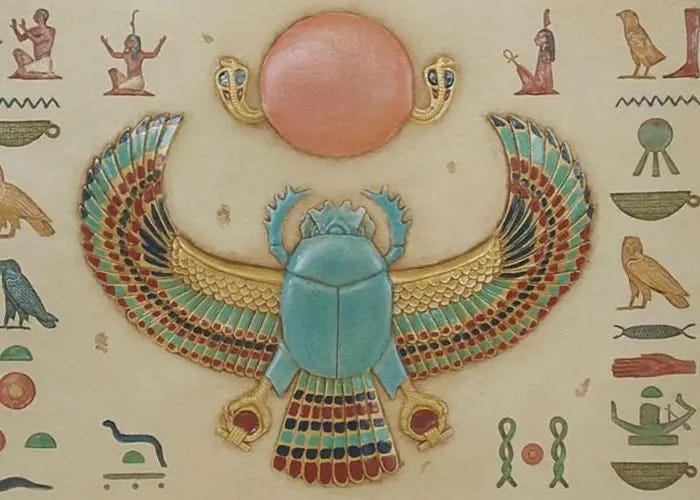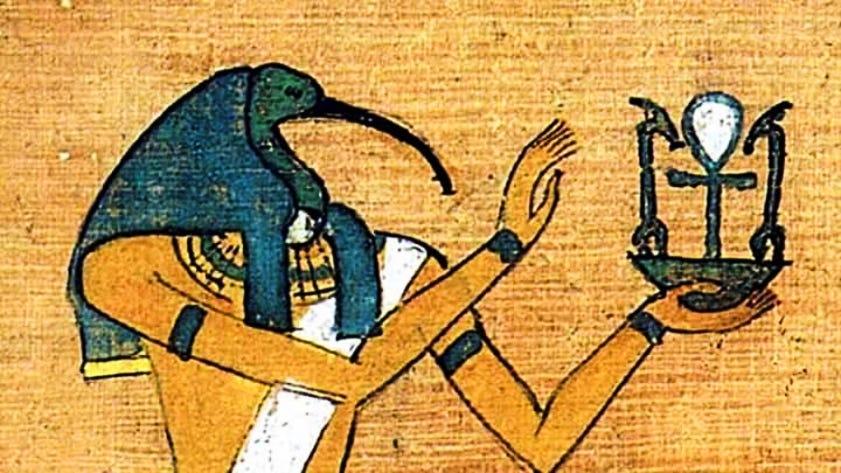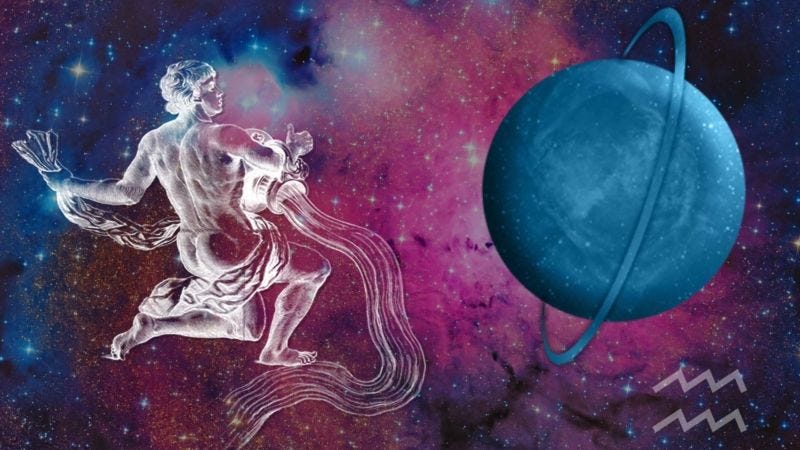Dreams and Synchronicity
Most inspiration for my Substack posts can be traced to synchronicity or what psychologist C.G. Jung termed ‘meaningful coincidence.’ This piece is a meaningful example.
I’ve related this story before and apologize to my readers for the repetition. But it’s highly relevant to the overall theme and objective of the piece; that is, spiritual rebirth. The story recounts an experience Jung had with one of his patients who had dreamt of a Egyptian golden scarab beetle.
This dream is significant to our discussion because of a ‘meaningful coincidence’ that occurred during the patient’s therapy. While the patient was describing her dream to Jung, a scarab beetle, closely resembling the Egyptian scarab, suddenly appeared at the window of Jung's office.
This rare occurrence in Switzerland, no less, created a connection between the patient's inner world (her dream) and real-world reality. It broke through her intellectual defenses, allowing for meaningful psychological progress. It demonstrated the connection between the unconscious mind (as represented by dreams) and external events. And it illustrated Jung's theory that synchronistic events often occur during significant life transitions or transformations.
In dreams, synchronicity can manifest as symbols or events that later correspond to waking life experiences, guiding individuals through personal growth and transformation — or recommending titles for future Substacks.
While we don’t know why the patient dreamed of an Egyptian beetle, Jung's theory suggests that the scarab's symbolism of rebirth and transformation was likely relevant to the patient's psychological state and her need for personal growth.
Our most recent piece titled, “The 2025 Planetary Alignments and Second Coming of Christ” [here], detailed a specific 34-day window of opportunity we have to “reconnect with Spirit.” I have discerned that this window, termed Liminal Abyss, opens around January 25th. The term ‘liminal abyss’ insinuates intense perturbations and perplexing chaos.
The Abyss
Why use the term abyss? Albert Camus, for example, sees the moment when Sisyphus watches his rock roll back down the hill as "the hour of consciousness," akin to staring into an abyss. In another interpretation, Gnostic texts use the abyss to point to cosmic battles against injustice, corrupted powers, and malevolent forces that we termed Ahrimanic.
In Gnosticism, the abyss represents a cosmic battlefield, an apt term for the spiritual battle humanity currently faces. The Gnostic cosmology 'On the Origin of the World' describes the end times when archons (corrupt rulers) will be cast into the abyss by Sophia, the embodiment of wisdom.
According to this Gnostic perspective, the archons are seen as lesser, imperfect beings created by the Demiurge, a flawed creator god. These archons are often associated with ignorance, materialism, and the unjust exercise of power over humanity.
They are believed to keep humans trapped in a state of spiritual ignorance and material bondage. In the eschatological vision of 'On the Origin of the World', Sophia's role is to ultimately overthrow these corrupt rulers. This act symbolizes the triumph of divine wisdom over ignorance and injustice.
The abyss into which the archons are cast represents a realm of non-existence or spiritual oblivion, effectively ending their influence over the material world and human souls. The pressing question is, “How much creative destruction must we endure before Sophia unseats the banking cartels, the inept and corrupt rulers and their megaphonic globalist institutions, e.g. the World Economic Forum, World Health Organization, Atlantic Council, and the Vatican?”
For we wrestle not against flesh and blood, but against principalities, against powers, against the rulers of the darkness of this world.
Ephesians 6:12
Both the inspiration for this piece, as well as the anticipation of an extraordinary 34-day period of liminality, were products of synchronicity. The word liminality refers to the ambiguous, transitional state experienced during a period of change. It is characterized by disorientation, suspension of normal social structures, and assorted abysmal horrors.
Liminality, therefore, is that threshold between one's former status and new, yet-to-be-established identity. In spiritual terminology, this awe inspiring transformation is frequently called metanoia — a Greek word that means a head-turning new way of seeing things that reorients one's outlook on the world, oneself, and one's relationship with God.
Hermeticism
Returning to Ancient Egypt and the Axis Mundi of the world, the significance of arcane Hermetic traditions in contemporary society cannot be overstated. As Rational Spirituality posits, religion often represents the entropy of spirituality - a process where the dynamic, living essence of spiritual experience becomes codified and rigid.
A side note. In our previous piece [here], we identified the Great Pyramid as Axis Mundi, the sacred center that connects the heavens to earth and humans to gods. Yes, gods. Plural. We need to disabuse ourselves of the monotheistic delusion, for monotheism itself espouses three completely different gods — Yahweh, the Trinity, and Allah. But I digress.
When spiritual insights are transformed into dogma, as they are by religion, they simultaneously renounce their vitality and power to nourish the soul. Hermetic traditions, with their emphasis on direct experience, personal transformation, and the unity of all things, inject countervening energy into this entropic trajectory.
Hermetic principles offer several benefits for those seeking spiritual growth, including:
Flexibility of thought — Hermetic principles encourage adaptable thinking, allowing individuals to interpret spiritual concepts in ways relevant to their lives.
Emphasis on personal gnosis — Rather than relying solely on external authority, Hermeticism values personal insight and direct spiritual experience.
Holistic worldview — The Hermetic principle of "as above, so below" promotes an integrated understanding of the cosmos and human existence.
Tools for self-reflection — Hermetic practices often involve meditation, contemplation, and self-analysis, fostering personal growth and self-awareness.
Bridge between science and spirituality — Hermetic thought, with its emphasis on natural law and cosmic principles, can help reconcile scientific and spiritual worldviews.
Preservation of ancient wisdom — Hermetic traditions safeguard valuable insights from ancient cultures, offering alternative perspectives to mainstream thought.
Encouragement of critical thinking — The esoteric nature of Hermetic teachings challenges individuals to think deeply and question ‘approved narratives.’
By contemplating Hermetic principles, we can counteract the stagnation of the soul that often results from rigid religious dogma and instead foster a vibrant, evolving spirit — the articulated objective of Rational Spirituality.
Jesus himself was not fond of religious dogma!
You’re hopeless, you religious scholars and Pharisees! Frauds! You’re like manicured grave plots, grass clipped and the flowers bright, but six feet down it’s all rotting bones and worm-eaten flesh. People look at you and think you’re saints, but beneath the skin you’re total frauds.
You’re hopeless, you religious scholars and Pharisees! Frauds! You build granite tombs for your prophets and marble monuments for your saints. And you say that if you had lived in the days of your ancestors, no blood would have been on your hands. You protest too much! You’re cut from the same cloth as those murderers, and daily add to the death count.
Matthew 23, ‘The Message’ translation
“It’s about you, not the church”
Noting that dream interpretation is highly personal and subjective, I still interpreted my liminal thought, “It’s about you, not the church.” The thought, perhaps as admonition, came to me a few nights ago during the early betwixt-and-between liminal hours before awakening. It presented as a potential essay title or subtitle about spiritual growth.
This phrase may emphasize, by extension, that everyone’s spiritual journey is ultimately their own responsibility, not the church’s. It could be seen as encouraging us all to take ownership of our spirituality rather than relying solely on a religious institution. It further reminds us that the essence of faith goes beyond membership in a physical church.
Analytical psychologist C.G. Jung saw the psyche as having an innate drive towards wholeness, symbolized by the Self. The phrase, “For you not the church” could be interpreted as the unconscious urging one to move away from relying on external authorities (like the church) and to cultivate their own inner compass.
The ‘church’ in this dream might not represent a religious institution at all, but any external system of beliefs or values adopted without critical reflection. Woke dogma, for example, is a religion to its adherents. This analysis can apply to many unchurched, disbelieving souls who are heavily guided by social constructs, peer pressure, and media propaganda.
Jung regarded betwixt and between transitional times (like dawn and dusk) as ‘liminal spaces’ where collective unconscious archetypes and the Akashic Field are more accessible. This always suggests that liminal messages carry a potent charge and shouldn't be ignored.
The archetype of Ezekiel’s Watchman comes to mind in this context. Those influenced by the Watchman archetype carry a heavy responsibility to see impending danger and warn others, even when they don't want to hear the message. This resonates with Ezekiel's own struggles as he faced resistance and disbelief from his people.
Ezekiel 33 emphasizes the consequences of ignoring the Watchman's warning. Both the Watchman and the people bear responsibility – the Watchman for failing to warn, and the people for failing to heed the warning. This resonates with Jung's concept of individuation, which often involves challenging societal norms and expectations.
By exposing psy-ops and false narratives, the Watchman helps protect individuals and communities from manipulation and empowers them to make informed decisions.
The Shofar
The shofar is closely associated with the role of prophets, who were often considered watchmen over nations. Prophets like Ezekiel were appointed by God as watchmen, using their voices (symbolized by the shofar) to deliver divine messages and warnings.
The shofar's sound is meant to awaken the hearts and minds of the righteous from spiritual slumber. This aligns with the Watchman's duty to keep people spiritually alert and adequately prepared.
The figure of Hermes Trismegistus (thrice blessed), a syncretic fusion of the Greek god Hermes and Egyptian god Thoth, is central to Hermetic teachings. As a psychopomp (guide in the land of the dead) and overseer of speech and interpretation, Hermes Trismegistus embodies aspects of the Watchman archetype in a spiritual context.
Hermes Trismegistus is revered as the author of the Hermetica, a vast corpus of writings that expound on theology, cosmology, and spiritual practices. These texts, particularly the Corpus Hermeticum, are considered sacred within the tradition.
Practitioners of the technical Hermetica, which includes astrology and alchemy, sought to understand and influence divine forces. Their role in observing and interpreting cosmic patterns and celestial events aligns with the Watchman's duty to remain vigilant and alert to signs and omens.
Both Hermetic and Jungian traditions emphasize the journey of self-discovery and the realization of one's true nature. In Hermetic thought, this involves awakening to one's divine essence, while Jung's individuation process leads to the integration of conscious and unconscious aspects of the psyche.
Substack
I have come to believe that Substack has a special mission, a special and vital role to play in The Great Aquarian Age Awakening. We’ll see a glimpse of it, a fleeting, bright vision of the future beginning in late February when the Epiphanic energies begin to extract order from chaos — good from evil. Who can say, save God, how long the transition will last before humanity fully manifests the Aquarian vision and it becomes reality.
It took the Piscean Age 400-odd-years to gain traction.
There are a number of authors here on Substack who are wholly committed to our prophetic future. I restack them often, but demur from listing them for fear of leaving some out that I know and all who I have yet to find. I consider them all my brothers and sisters.







